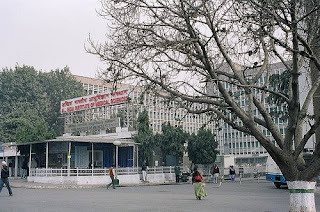One of the recent travel themes, Eco-tourism is gaining popularity across the world day –by- day including the India. Eco-tourism includes programs that minimize the adverse effects of traditional tourism on the natural environment, and enhance the cultural integrity of local people. Consecrated with the aim to preserve the diversity of the world’s natural and cultural environments, Eco-tourism is now considered the fastest growing market in the tourism industry. According to the World Tourism Organization (WTO) with an annual growth rate of 5% worldwide and representing 6% of the world gross domestic product, 11.4% of all consumer spending – Eco-tourism is rapidly growing.
What is Eco-tourism?
Eco-tourism means making as little environmental impact as possible and helping the sustain the indigenous populace, thereby encouraging the preservation of wildlife and habitats when visiting a particular place. Eco-tourism has been described by the International Eco-tourism society as "responsible travel to natural areas that conserves the environment and improves the well-being of local people."
Goals of Eco-tourism
Saving the environment around you and preserving the natural luxuries and forest life, is the prime goal eco-tourism. Whether it's about a nature camp or organizing trekking trips towards the unspoilt and inaccessible regions, one should always keep in mind not to create any mishap or disturbance in the life cycle of nature.
Eco-tourism also focuses to encourage and support the diversity of local economies for which the tourism-related income is important. With support from tourists, local services and producers can compete with larger, foreign companies and local families can support themselves. Besides all these, the revenue produced from tourism helps and encourages governments to fund conservation projects and training programs.
Other goals of Eco-tourism include historical, cultural, biological and cultural conservation, preservation, sustainable development etc. Eco-tourism focuses on local cultures, wilderness adventures, volunteering, personal growth and learning new ways to live on our vulnerable planet.
Professionals Involved in Eco-tourism
Many professionals have been involved in formulating and developing eco-tourism policies. Eco-tourism professionals come from the fields like Geographic Information Systems, Wildlife Management, Wildlife Photography, Marine Biology and Oceanography, National and State Park Management, Environmental Sciences, Women in Development, Historians and Archaeologists, etc.
Do’s & Don’ts
In the recent time India too is gathering momentum with more and more travel related organisation's are addressing the needs of the eco-tourists and promoting eco-tourism in the country. Some basic do's and don'ts of eco-tourism in India are as follows :
Do’s
- Carry back all non-degradable litter such as empty bottles, tins, plastic bags etc. These must not litter the environment or be buried. They must be disposed in municipal dustbins only.
- Observe the sanctity of holy sites, temples and local cultures.
- Cut noise pollution. Do not blare aloud radios, tape recorders or other electronic entertainment equipment in nature resorts, sanctuaries and wildlife parks.
- In case temporary toilets are set-up near campsites, after defecation, cover with mud or sand. Make sure that the spot is at least 30 meters away from the water source.
- Respect people's privacy while taking photographs. Ask for prior permission before taking a photograph.
Don'ts
- Do not take away flora and fauna in the forms of cuttings, seeds or roots. It is illegal, especially in the Himalayas. The environment is really delicate in this region and the bio-diversity of the region has to be protected at all costs.
- Do not use pollutants such as detergent, in streams or springs while washing and bathing.
- Do not use wood as fuel to cook food at the campsite.
- Do not leave cigarettes butts or make open fires in the forests.
- Do not consume aerated drinks, alcohol, drugs or any other intoxicant and throw bottles in the wild.
- Do not tempt the locals, especially children by offering them foodstuff or sweets. Respect local
traditions.
- Polythene and plastics are non biodegradable and unhealthy for the environment and must not be
used and littered.
Eco-tourism Spots in India
Eco-Tourism in India is still at a very early stage, but conscious efforts are made to save the fragile Himalayan Eco System and culture and heritage of the indigenous people. Holiday Camping, Hotel accommodation are gathering momentum amongst the metropolis traveller. A plethora of holiday camping options are available in the Himalayan belt, where soft adventure tourism is packaged with holiday camping to create an acceptable eco-tourism product. Some of the important eco-tourism related spots in India include :
Eco-Tourism Pioneers in Kerala - http://www.tourindiakerala.com/
Eco-Tourism Pioneers in South India - http://www.junglelodges.com/
The Himalayan Trout House - Tirthan, Himachal Pradesh - http://www.questrails.com/
The Camp Kyari (one of the finest models of Eco-tourism in the country) - Village Kyari, Ramnagar - http://www.wildrift.com/
Camp Lunagarh - Mori, Uttaranchal - http://www.treknraft.com/
The Himalayan River Runner Camp - Rishikesh, Uttaranchal - http://www.hrr.com/
The OAI Camp - Rishikesh, Uttaranchal - http://www.oai.com/
The Leopard Beach Camp - Rishikesh, Uttaranchal - http://www.snowleopardadventures.com/
For more info about eco-tourism spots in India visit the website :



